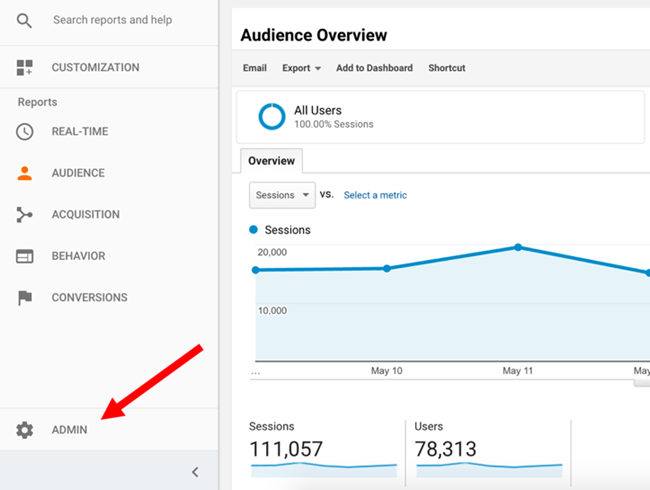Harnessing Remarketing in Google Analytics: A Comprehensive Overview
Using remarketing in Google Analytics provides organizations a critical side in connecting to prospective clients. The capability to target people who have actually already engaged with your web site presents an one-of-a-kind opportunity for tailored advertising efforts. By recognizing just how to craft target market listings and release them effectively, companies can dramatically enhance their conversion rates. The complexities of setting up and enhancing remarketing projects need a comprehensive understanding of audience segmentation and efficiency evaluation. This guide will lose light on the essential actions associated with using the complete possibility of remarketing in Google Analytics, leading to improved marketing results.
Recognizing Remarketing in Google Analytics
Remarketing in Google Analytics enables services to strategically target users who have actually formerly interacted with their internet site or mobile app. By leveraging information from Google Analytics, companies can produce personalized remarketing lists based on user actions, such as web pages seen, actions taken, or particular goals accomplished. This powerful tool allows companies to re-engage with users that have actually shown passion in their solutions or items, inevitably boosting the probability of conversion.
Understanding the various kinds of remarketing methods is crucial for an effective project - What Is “Remarketing” In Google Analytics?. Google Analytics provides numerous choices, consisting of common remarketing, dynamic remarketing, and remarketing lists for search ads (RLSA) Each type serves a distinct objective and can be customized to fulfill details advertising objectives
Additionally, examining the efficiency of remarketing projects is crucial for optimizing outcomes. Google Analytics offers useful insights into the effectiveness of various remarketing techniques, allowing organizations to make data-driven decisions and fine-tune their targeting technique. By continually readjusting and keeping track of remarketing efforts based upon analytics data, companies can make the most of ROI and drive success in their advertising and marketing efforts.
Establishing Up Remarketing Campaigns

After establishing up target market lists, the next action is to connect Google Analytics with Google Advertisements. By linking these 2 platforms, organizations can effortlessly transfer audience listings from Google Analytics to Google Advertisements for remarketing objectives. This assimilation permits more exact targeting and much better project efficiency.
When the accounts are linked, services can develop remarketing campaigns in Google Advertisements utilizing the audience provides previously defined in Google Analytics. These campaigns can be personalized with details advertisement creatives, messaging, and bidding process techniques to effectively re-engage with previous visitors and drive conversions. By adhering to these actions, organizations can take advantage of the power of remarketing to improve their marketing initiatives and enhance ROI.
Utilizing Audience Segmentation Strategies

Predefined sections in Google Analytics allow you to promptly examine common target market classifications fresh users, returning individuals, or customers who completed a certain objective on your site. Custom-made segments, on the other hand, enable you to produce distinct sections based on particular requirements that are very important to your company goals. Dynamic remarketing listings immediately change based upon user habits, showing tailored advertisements to customers that have actually interacted with your site in certain means.
Studying Remarketing Efficiency Metrics
Upon reviewing the efficiency of remarketing projects in Google Analytics, the analysis of essential performance metrics provides beneficial understandings into target market interaction and conversion rates. By delving right into metrics such as click-through rates (CTR), conversion prices, expense per purchase (CERTIFIED PUBLIC ACCOUNTANT), and return on ad invest (ROAS), marketing experts can evaluate the success of their remarketing initiatives. Analyzing these metrics enables marketers to maximize campaigns, fine-tune target market targeting, and allot spending plans effectively to improve overall remarketing performance.
Optimizing Remarketing Strategies
When look what i found refining remarketing methods in Google Analytics, concentrating on audience segmentation is extremely important for accomplishing project success. By dividing your audience right into specific sectors based upon their actions, demographics, or interests, you can customize your advertisements extra properly to each team. This targeted method boosts the chance of involving users that have actually currently shown rate of interest in your services or products, bring about greater conversion prices.
An additional essential element of enhancing remarketing methods is continually screening and refining your campaigns (What Is “Remarketing” In Google Analytics?). A/B testing different ad creatives, messaging, or offers can help you determine what reverberates finest with your audience and drives one of the most conversions. By evaluating the efficiency of these tests in Google Analytics, you can make data-driven choices to maximize your remarketing initiatives better
Additionally, leveraging dynamic remarketing can significantly enhance your campaign results. This feature allows you to show personalized ads to users based upon their why not try this out previous communications with your web site, showcasing services or products they have actually previously seen. By delivering my review here customized material to individuals based upon their behaviors and rate of interests, dynamic remarketing can aid boost interaction and drive conversions.
Conclusion
Finally, utilizing remarketing in Google Analytics is a tactical method to target users that have previously involved with an internet site. By developing tailored target market checklists and using audience segmentation strategies, services can maximize remarketing campaigns for increased conversion prices. Analyzing efficiency metrics and constantly optimizing approaches are critical for maximizing the effectiveness of remarketing efforts.
Google Analytics uses various alternatives, consisting of basic remarketing, vibrant remarketing, and remarketing lists for search advertisements (RLSA)After establishing up target market checklists, the next step is to connect Google Analytics with Google Advertisements. By linking these 2 systems, businesses can perfectly move target market listings from Google Analytics to Google Ads for remarketing objectives.When the accounts are connected, businesses can produce remarketing projects in Google Advertisements using the audience details previously defined in Google Analytics.When refining remarketing approaches in Google Analytics, concentrating on audience segmentation is vital for attaining campaign success.